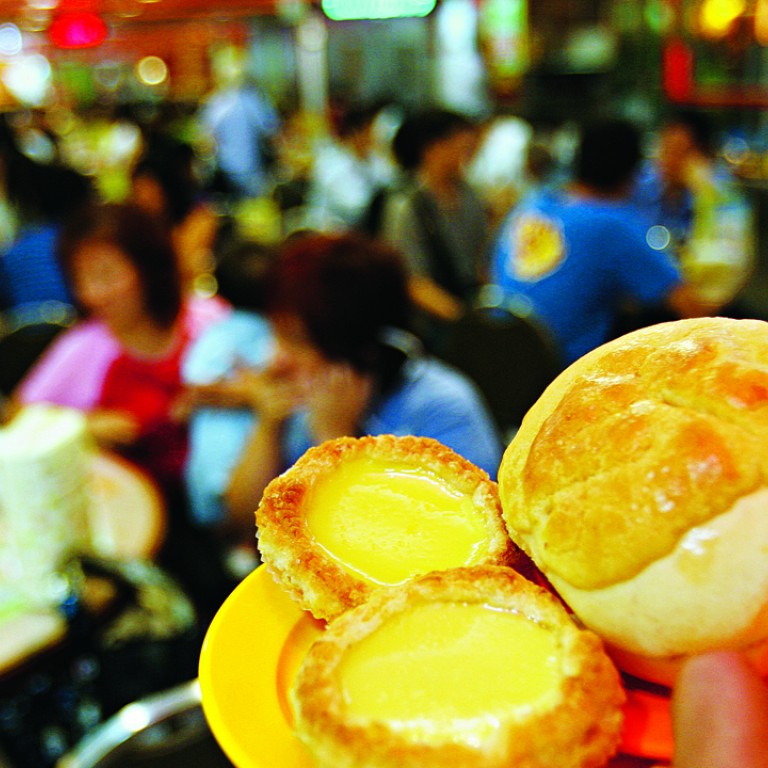
Dumplings, sesame sweet soup, red bean drink: Hongkongers’ favourite foods in the firing line in war on sugar
Traditional foods and drinks such as pork buns, dumplings and sesame sweet soup are high in sugar - worse, in some cases, than soft drinks such as Coca-Cola - and pose risks for our health
You may be conscientiously cutting soft drinks from your diet to avoid consuming too much sugar. But did you know that steamed barbecued pork bun could be sabotaging your efforts?
Gram for gram, char siu bao pack more sugar than Coke. One steamed barbecued pork bun contains an average of 7.7 grams of sugar, according to a nutritional analysis of Chinese dim sum by the Centre for Food Safety in 2007 that sampled 10 different buns randomly purchased from food outlets in 10 different Hong Kong districts.
That works out to 14g of sugar per 100g of the bun, more than the 10.6g per 100 millilitres (or roughly 100g) of Coca-Cola.
READ MORE: Popular Hong Kong foods and their sugar content
When it comes to sugar, there are obvious culprits such as fizzy drinks and confectionery. But sugar lurks in many everyday foods not usually seen as sweet, such as canned tomatoes, salad dressings, pasta and bread.
Many popular Hong Kong foods and drinks are high in sugar, like red bean ice drink (45g per 350ml serving), steamed egg custard bun (13g per bun) and sesame sweet soup (27g per serving). However, some savoury items too are surprisingly high in sugar, such as sweet and sour pork (10.5g per 100g) and deep-fried meat dumpling (4.1g per dumpling).

Having just one steamed char siu bao washed down with red bean icy drink would exceed the recommended daily intake of free sugars of 50g for a 2,000-calorie diet. In March last year, the World Health Organisation released guidelines recommending adults and children reduce their daily intake of free sugars to less than 10 per cent of their total energy intake.
For a 2,000-calorie diet, this means sugars should make up no more than 200 calories daily, equivalent to 50g or about 12 teaspoons of sugar. A further reduction to below 5 per cent per day would provide additional health benefits, the WHO advises.
Sugar calories are the worst, because they turn to fat in the liver, driving insulin resistance, and risk for diabetes, heart, and liver disease
“We have solid evidence that keeping intake of free sugars to less than 10 per cent of total energy intake reduces the risk of [being] overweight, obesity and tooth decay,” says Dr Francesco Branca, director of the WHO’s department of nutrition for health and development. “Making policy changes to support this will be key if countries are to live up to their commitments to reduce the burden of non-communicable diseases.”
The guideline does not refer to the sugars naturally present in fresh fruit, vegetables and milk, because there is no reported evidence of adverse effects of consuming these sugars.
Free sugars refer to monosaccharides (single sugar molecules – such as glucose, fructose and galactose) and disaccharides (two sugar molecules bound together – such as sucrose, maltose and lactose) added to foods and drinks by the manufacturer, cook or consumer, and sugars naturally present in honey, syrups, fruit juices and fruit juice concentrates.
Globally, the daily average consumption of sugars and high fructose corn syrup per person is now 70g (about 17 teaspoons), up 46 per cent from 48g per day 30 years ago, according to statistics cited by the Centre for Food Safety.
The war on sugar, which gained in intensity last year with some countries debating a tax on fizzy drinks, is fuelled by increasing research into its bad effects. And it's not simply just about weight gain or dental caries.

In a 2014 study, researchers from New Zealand’s University of Otago uncovered evidence that sugar has a direct effect on risk factors for heart disease, and is likely to have an impact on blood pressure, independent of weight gain.
Reducing consumption of added sugar – even without reducing calories or losing weight – has the power to reverse a cluster of chronic metabolic diseases, including high cholesterol and blood pressure in children in as little as 10 days, found a study that appeared online last year in the journal Obesity.
In the study, 43 children between the ages of nine and 18 who were obese and had at least one other chronic metabolic disorder, such as hypertension, high triglyceride levels or a marker of fatty liver, were given nine days of food that restricted sugar but substituted starch to maintain the same fat, protein, carbohydrate, and calorie levels as their previously reported home diets. The total ratio of dietary sugar was reduced from 28 per cent to 10 per cent, and fructose from 12 per cent to 4 per cent of total calories, respectively.
By the end of the study, all of the surrogate measures of metabolic health had improved, says lead author Dr Robert Lustig, paediatric endocrinologist at UCSF Benioff Children’s Hospital San Francisco.
“This study demonstrates that ‘a calorie is not a calorie’. Where those calories come from determines where in the body they go,” says Lustig. “Sugar calories are the worst, because they turn to fat in the liver, driving insulin resistance, and risk for diabetes, heart, and liver disease. This has enormous implications for the food industry, chronic disease, and health care costs.”
Sugar comes in more than 50 different guises. Whatever its source, colour, form or name, any added sugar should be avoided. As the Centre for Food Safety states: “There is no dietary requirement for sugars.”

